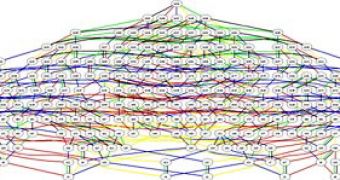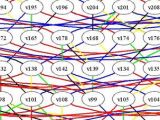A team of 19 mathematicians has succeeded in mapping E-8, a vast complex number invented more than a century ago.
The 248-dimensional structure took four years of work and generated more data than the Human Genome Project.
E8 belongs to the "Lie group", invented by the 19th Century Norwegian mathematician Sophus Lie and describing symmetrical objects.
This work will help fields of physics, which investigate more than four dimensions, such as the string theory.
Familar geometrical structures like balls and cones have symmetry in three dimensions, and Lie groups do exist for them, but E8 is much bigger. "What's attractive about studying E8 is that it's as complicated as symmetry can get", observed David Vogan from the Massachussetts Institute of Technology (MIT) in the US. "Mathematics can almost always offer another example that's harder than the one you're looking at now, but for Lie groups, E8 is the hardest one."
The mathematicians needed 4 years to conceptualize, design and run the calculations. The final computation required more than three days' solid processing time on a Sage supercomputer to achieve the matrix of linked numbers characterizing the E8 structure. E 8 matrix contains over 60 times more information than the human genome sequence.
Each of the 205,263,363,600 entries on the matrix is far more complex than a regular number; some represent in fact complex equations.
If all the numbers were written out in small type, that would mean a surface the size of Manhattan.
The E 8 matrix would ease research of symmetry and related areas of mathematics and quantum physics, like the string theory, which investigate structures with more than the conventional four dimensions of space and time. "While mathematicians have known for a long time about the beauty and the uniqueness of E8, we physicists have come to appreciate its exceptional role only more recently," commented Hermann Nicolai, director of the Max Planck Institute for Gravitational Physics (the Albert Einstein Institute) in Germany. "Yet, in our attempts to unify gravity with the other fundamental forces into a consistent theory of quantum gravity, we now encounter it at almost every corner."

 14 DAY TRIAL //
14 DAY TRIAL // 
